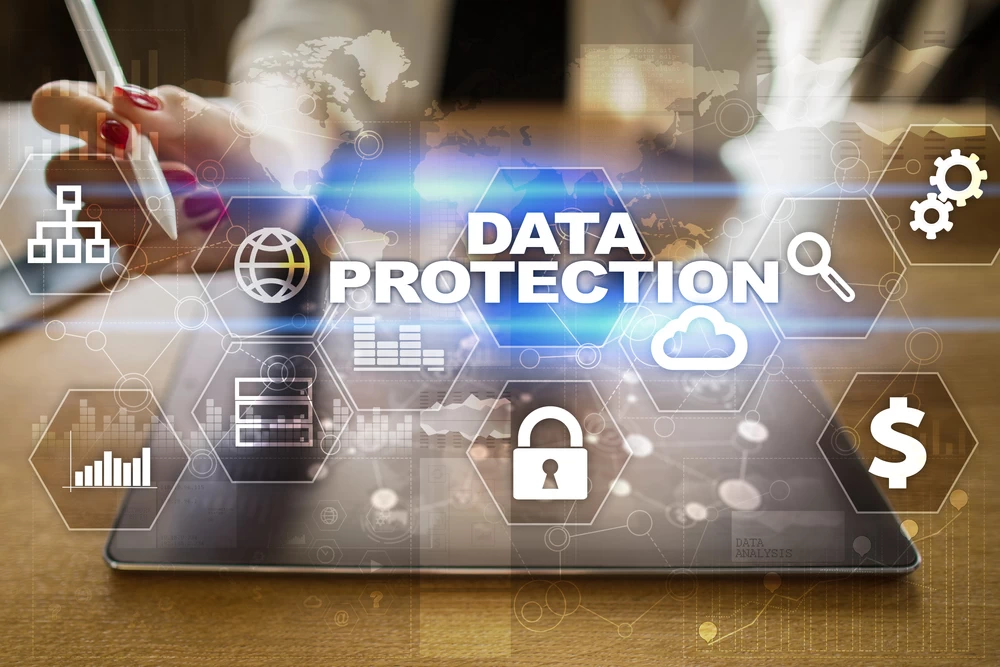
Insider threats originate within your organization.
Protecting Your Business-Critical Data
Protecting Your Business-Critical Data from Insider Threats
In today’s technology-driven world, information sharing and data access have become easier than ever. However, this convenience comes with significant challenges, especially for small business owners. Among the many cybersecurity threats businesses face, one of the most underestimated yet devastating risks stems from insider threats.
Unlike external cyberattacks, insider threats originate within your organization. They often involve employees, contractors, or even third-party partners who inadvertently or maliciously compromise sensitive data. For small businesses, where resources are limited, the impact of an insider threat can be catastrophic, disrupting operations, tarnishing reputations, and incurring hefty financial penalties.
To safeguard your business, you must understand the risks posed by insider threats and implement effective strategies to mitigate them. Let’s explore the types of insider threats, common motivations, and actionable steps to protect your business-critical data.

What Are Insider Threats?
Insider threats are security risks that originate from within an organization. These threats often stem from two primary sources: negligent insiders and malicious insiders. Understanding these categories can help you better identify vulnerabilities and implement appropriate defenses.
1. Negligent Insiders
Negligent insiders are employees or contractors who unintentionally compromise data security. While their actions may not be malicious, their lack of awareness or carelessness can lead to severe consequences. Common mistakes include:
- Clicking on phishing links from untrusted sources.
- Downloading attachments from suspicious emails.
- Visiting malicious websites on work devices.
- Using weak passwords that are easy to hack.
- Sending sensitive information to the wrong recipients by mistake.
According to a 2024 report by Verizon, 74% of data breaches involve the human element, and negligence accounts for a significant portion of these incidents. For small businesses, even one mistake by an employee can result in costly data breaches or ransomware attacks.
2. Malicious Insiders
Malicious insiders are individuals within your organization who intentionally compromise data security for personal gain or revenge. They may misuse their access to steal sensitive data, sabotage systems, or share confidential information with competitors or cybercriminals.
While malicious insiders are less common than negligent ones, their actions often have more severe consequences. For example, a disgruntled employee with administrative privileges can exfiltrate sensitive data, disrupt operations, or cause financial losses.
Why Small Businesses Are Particularly Vulnerable
Small businesses often assume they are too small to be targeted, but this misconception can lead to complacency. Insider threats pose a unique challenge for smaller organizations because:
- They often lack dedicated IT security teams.
- Limited budgets make it difficult to invest in robust cybersecurity tools.
- Employees may wear multiple hats, increasing the chances of accidental errors.
A 2023 study by IBM revealed that the average cost of an insider threat incident was $4.9 million, a staggering figure for small businesses. This highlights the critical need for proactive measures to address insider threats.
Identifying Insider Threats
The first step in protecting your business is learning to recognize the warning signs of insider threats.
Behavioral Indicators
- Employees attempting to access sensitive data outside their job responsibilities.
- Frequent work during unusual hours without prior notice.
- Increased interest in privileged information or classified projects.
Digital Red Flags
- Unusual data transfers or downloads, such as large file transfers to external devices.
- Excessive bandwidth usage without a clear business reason.
- Unauthorized access attempts or failed login attempts.
- Use of unapproved storage devices like personal USB drives.
How To Protecting Your Business-Critical Data?
Effective Strategies to Mitigate Insider Threats
To protect your business-critical data, you need a proactive approach that combines technology, training, and policies. Here are the top strategies to combat insider threats:
1. Limit Access to Sensitive Data
Not every employee needs access to all company data. Implement the principle of least privilege (PoLP), which ensures employees only have access to the information necessary for their job roles. Use unique login credentials for each employee to monitor access and quickly identify potential misuse.
2. Regular Data Backups
Data backups are your safety net in the event of an insider threat or cyberattack. Establish a regular backup schedule for all critical data and store backups securely, both onsite and in the cloud. According to a 2024 report by Veeam, businesses with comprehensive backup strategies recover 96% faster from data breaches compared to those without.
3. Invest in Employee Training
Your employees are your first line of defense. Educate them about cybersecurity best practices, including recognizing phishing emails, creating strong passwords, and avoiding risky behaviors. Regular training sessions and simulated phishing exercises can significantly reduce the likelihood of insider incidents.
4. Implement Insider Threat Detection Tools
Leverage technology to monitor suspicious activity within your IT environment. Tools like user behavior analytics (UBA), data loss prevention (DLP) software, and endpoint detection and response (EDR) solutions can help identify potential threats early.
5. Establish a Clear Cybersecurity Policy
A well-defined cybersecurity policy provides employees with clear guidelines on acceptable behavior, device usage, and data handling. Include rules for personal device use, remote work, and password management to minimize risks.
6. Monitor Employee Activity
Monitor employee activity using logging and auditing tools. While maintaining trust is important, monitoring ensures accountability and helps identify unusual behaviors.
Partner with Experts to Secure Your Business
Small business owners often face challenges in implementing effective insider threat protection due to limited resources or technical expertise. That’s where a trusted partner like PH-IT Solutions comes in.
With years of experience in data security and insider threat mitigation, we help small businesses implement cutting-edge solutions tailored to their needs. From regular data backups and employee training to advanced monitoring tools and compliance support, we’ve got you covered.
Insider threats may be on the rise, but with proactive measures, your business can stay secure and resilient. Don’t wait for a breach to take action. Contact PH-IT Solutions today and let us help you protect what matters most—your business-critical data.
Compliance for Financial Businesses
For financial businesses, the stakes are even higher due to stringent compliance requirements. Insider threats can lead to violations of regulations such as:
- Gramm-Leach-Bliley Act (GLBA): Requires financial institutions to protect customer information.
- Payment Card Industry Data Security Standard (PCI-DSS): Mandates security measures for businesses that process credit card payments.
- Sarbanes-Oxley Act (SOX): Enforces transparency and accountability in financial reporting.
A comprehensive risk assessment and insider threat mitigation strategy ensure compliance and protect your business from penalties, legal action, and reputational damage.
Benefits of Proactively Addressing Insider Threats
Investing in insider threat prevention not only protects your business but also offers several long-term benefits:
- Improved Security: Reduced likelihood of data breaches and unauthorized access.
- Cost Savings: Avoiding financial losses from breaches or ransomware attacks.
- Compliance: Adherence to regulatory requirements builds trust with customers and stakeholders.
- Reputation Management: Demonstrates your commitment to safeguarding sensitive information.
